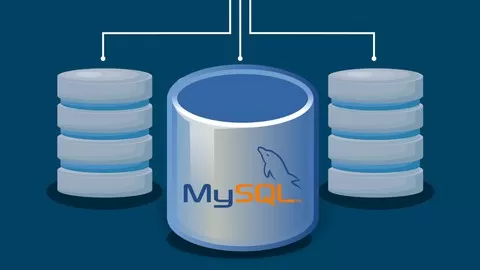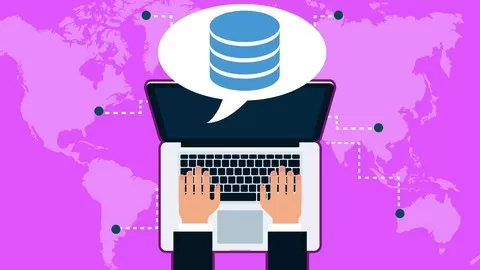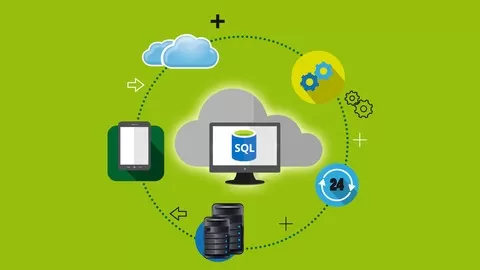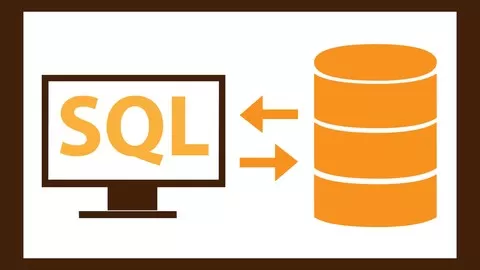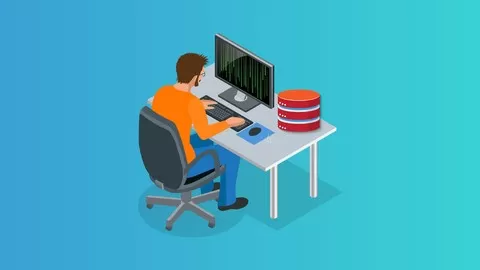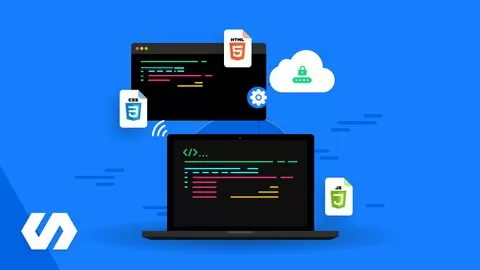A warm welcome to the SQL Programming and MySQL course by Uplatz.
What is SQL?
Structured Query Language (SQL) is a standard language for storing, manipulating and retrieving data in databases. It is used to manipulate data in relational databases.
In simple words, SQL is the standard programming language used to design, create and manage relational databases. Relational systems are made up of a set of tables containing rows and columns of data. Each column in a table represents a category of data, such as a customer name or address, and each row contains a data value for the intersecting column. Some of the major ways in which SQL is used in conjunction with a relational database are for the purposes of storing, retrieving, and manipulating data stored in a relational database.
We live in a data-driven world where people search through data to find insights to form the basis for strategy, marketing, operations, and implementation. There are a lot of businesses that use large, relational databases, which makes a basic understanding of SQL a great employable skill for anyone interested including data scientists, data analysts, data engineers, business analysts, consultants, and so on. Used since the 1970s, SQL will be a technology staple for the foreseeable future. It’s a universal coding language that will help you transition into learning other computer languages, including JavaScript and Python.
Features of SQL
•Modifying database table and index structures
•Adding, updating and deleting rows of data
•Retrieving information from a database for transaction processing and analytics
•Generating tables and other database projects
What is MySQL?
MySQL is a relational database management system based on SQL, which is the popular language for accessing and managing the records in the database. MySQL is open-source and free software under the GNU license. It is supported by Oracle Company. MySQL is currently the most popular database management system software used for managing the relational database. It is open-source database software, which is supported by Oracle Company. It is fast, scalable, and easy to use database management system in comparison with Microsoft SQL Server and Oracle Database. It is commonly used in conjunction with PHP scripts for creating powerful and dynamic server-side or web-based enterprise applications.
The core of the MySQL database is the MySQL Server. This server is available as a separate program and responsible for handling all the database instructions, statements, or commands. The working of MySQL database with MySQL Server is given below:
•MySQL creates a database that allows you to build many tables to store and manipulate data and defining the relationship between each table.
•Clients make requests through the GUI screen or command prompt by using specific SQL expressions on MySQL.
•Finally, the server application will respond with the requested expressions and produce the desired result on the client-side.
The developers can use any MySQL GUI. The chosen GUI should be lighter and user-friendly to make your data management activities faster and easier. Some of the most widely used MySQL GUIs are MySQL Workbench, SequelPro, DBVisualizer, Navicat DB Admin Tool, etc.
MySQL is a Relational Database Management System (RDBMS) software that provides many functionalities, some of the key ones are as follows:
•MySQL allows us to implement database operations on tables, rows, columns, and indexes.
•It defines the database relationship in the form of tables (collection of rows and columns), also known as relations.
•It provides the Referential Integrity between rows or columns of various tables.
•MySQL allows us to updates the table indexes automatically.
•MySQL uses many SQL queries and combines useful information from multiple tables for the end-users.
•It is an open-source database, so you don’t have to pay a single penny to use it.
•It is a very powerful program that can handle a large set of functionality of the most expensive and powerful database packages.
•MySQL is customizable because it is an open-source database, and the open-source GPL license facilitates programmers to modify the SQL software according to their own specific environment.
•It is quicker than other databases, so it can work well even with the large data set.
•MySQL supports many operating systems with many languages like PHP, PERL, C, C++, JAVA, etc.
•MySQL uses a standard form of the well-known SQL data language.
•It is very friendly with PHP, the most popular language for web development.
•MySQL supports large databases, up to 50 million rows or more in a table.
MySQL follows the Client-Server Architecture. This model is designed for the end-users called clients to access the resources from a central computer known as a server using network services. Here, the clients make requests through a graphical user interface (GUI), and the server will give the desired output as soon as the instructions are matched. The process of MySQL environment is the same as the client-server model.
Uplatz provides this comprehensive SQL Programming and MySQL training. In this course, you will learn how to select data from multiple tables using both inner and outer joins and unions, understand how to create subqueries to develop more complex retrieval capabilities, and use DDL to create your own database and to populate tables. In addition, learn about database design, primary keys, foreign keys, indexes, table relationships, referential integrity, and normalization/denormalization techniques. This course prepares you to work with any relational database, such as Oracle, DB2, SQL Server, Sybase, or MySQL.
With this SQL programming course, you’ll be able to understand the key concepts of Structured Query Language (SQL) and will gain a solid working knowledge of this powerful and universal database programming language.
In this SQL Programming and MySQL Developer course, you’ll learn about the basic structure of relational databases and how to read and write simple and complex SQL statements and advanced data manipulation techniques. You’ll get to know about the traditional database structure, the structure and history of the relational database, and what structured query language (SQL) is and how it relates to the relational-database structure. Then you’ll discover how to use SQL to filter retrieved data and how to use SQL to sort and retrieve data from tables. Learn how to reformat retrieved data with calculated fields and how to merge columns and create alternate names for columns. You will gain knowledge on how to gather significant statistics from data using aggregate functions, and see how to extract data from multiple tables simultaneously using joins and subqueries. In addition, you’ll learn how to manipulate data using the INSERT, UPDATE, and DELETE statements.
This SQL Programming and MySQL course will show you how to use SQL to create and maintain tables, and you’ll learn how to create and use views to simplify complex queries, summarize data, and manipulate data stored in tables. You’ll discover how transaction processing, constraints, and indexes are implemented in SQL. And finally, you’ll discover how stored procedures, triggers, and cursors are implemented in SQL. You’ll learn to use Structured Query Language (SQL) to extract and analyze data stored in databases. You’ll first learn to extract data, join tables together, and perform aggregations. Then you’ll learn to do more complex analysis and manipulations using subqueries, temp tables, and window functions. By the end of the course, you’ll be able to write efficient SQL queries to successfully handle a variety of data analysis tasks.
By the end of this SQL course, you’ll have a solid working knowledge of structured query language. You’ll feel confident in your ability to write SQL queries to create tables; retrieve data from single or multiple tables; delete, insert, and update data in a database; and gather significant statistics from data stored in a database. This SQL training will help you learn SQL concepts and their implementation along with deep-dive into SQL queries, so that you can become a successful SQL developer. You will find out what are SQL commands, syntax, data types, operators, creation & dropping of tables, inserting and selecting queries.
The MySQL part of the course includes all topics of MySQL database that provides for how to manage database and to manipulate data with the help of various SQL queries. These queries are: insert records, update records, delete records, select records, create tables, drop tables, etc. Learn to use SQL to select, update, insert, and delete data from database tables, and acquire hands-on skills on MySQL database.
SQL Programming and MySQL – Course Syllabus
1. Basics of Databases
•Data Models and basic terminologies
•Advantages and disadvantages of DBMS
2. SQL Basic Understanding
•What is SQL?
•What SQL Can do?
•SQL Process
•ACID Properties
•What is ER Model?
•Best Practices
•Database Normalization
3. Introduction to SQL
•SQL Commands
•SQL Constraints
•Types of Keys
•MySQL Hands-on
4. SQL Basic Commands with demonstration
5. Basics and Aggregation Functions
6. Regular Expression Functions
7. SQL Comparison Clauses
•exists
•not exists
•create table like
•case when
•NULL Functions
8. SQL String Functions
9. SQL Numerical Function
10. Introduction to Date Functions
11. SQL Joins – Introduction and demonstration
12. Introduction MySQL Workbench
13. Stored Procedures and Views
